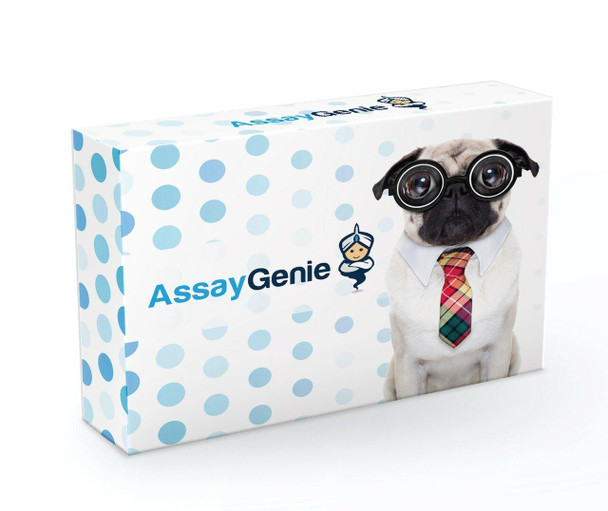Description
EGFR Monoclonal Antibody [PAT6E3AT] (CPAB0105)
The EGFR Polyclonal Antibody (CPAB0105) offered by AssayGenie is a valuable tool for researchers studying the Epidermal Growth Factor Receptor (EGFR). EGFR is a cell surface receptor that plays a key role in cell growth, proliferation, and survival, making it a crucial target for cancer research. This antibody was raised in rabbits and is highly reactive with human samples, making it ideal for a variety of research applications.The EGFR Polyclonal Antibody is validated for use in Western blot applications, allowing for the detection and analysis of EGFR protein expression in different cell types.
By specifically binding to EGFR, researchers can gain insight into the function and regulation of this important receptor in normal and disease states.Research on EGFR is essential for understanding its role in cancer development and progression, as well as for developing targeted therapies that can block EGFR signaling in cancer cells. By using the EGFR Polyclonal Antibody, researchers can further explore the molecular mechanisms involving EGFR and its potential as a therapeutic target in cancer treatment.
| Product Name: | EGFR Antibody |
| Product Sku: | CPAB0105 |
| Size: | 5μg |
| Host Species: | Mouse |
| Immunogen: | Anti-human EGFR mAb, is derived from hybridization of mouse FO myeloma cells with spleen cells from BALB/c mice immunized with recombinant human EGFR amino acids 424-65 purified from Ecoli. |
| Clone: | PAT6E3AT. |
| Reactivity: | Human |
| Applications: | Western Blot, ELISA |
| Purification Method: | EGFR antibody was purified from mouse ascitic fluids by protein-G affinity chromatography. |
| Isotype: | IgG2b |
| Background: | The epidermal growth factor receptor (EGF R) subfamily of receptor tyrosine kinases comprises four members: EGF R (also known as HER1, ErbB1 or ErbB), ErbB2 (Neu, HER-2), ErbB3 (HER-3), and ErbB4 (HER-4). All family members are type I transmembrane glycoprotein that has an extracellular domain which contains two cysteine-rich domains separated by a spacer region that is involved in ligand-binding, and a cytoplasmic domain which has a membrane-proximal tyrosine kinase domain and a C-terminal tail with multiple tyrosine autophosphorylation sites. The human EGF R gene encodes a 1210 amino acid (aa) residue precursor with a 24 aa putative signal peptide, a 621 aa extracellular domain, a 23 aa transmembrane domain, and a 542 aa cytoplasmic domain. EGF R has been shown to bind a subset of the EGF family ligands. Ligand binding induces EGF R homodimerization as well as heterdimerization with ErbB2, resulting in kinase activation, tyrosine phosphorylation and cell signaling. EGF R signaling has been shown to regulate multiple biological functions including cell proliferation, differentiation, motility and apoptosis. In addition, EGF R signaling has also been shown to play a role in carcinogenesis. |
| Synonyms: | Epidermal growth factor receptor, EC 2.7.10.1, Receptor tyrosine-protein kinase ErbB-1, ERBB, mENA, ERBB1, EGFR. |
| Storage Buffer: | For periods up to 1 month store at 4°C, for longer periods of time, store at -20°C. Prevent freeze thaw cycles. |










